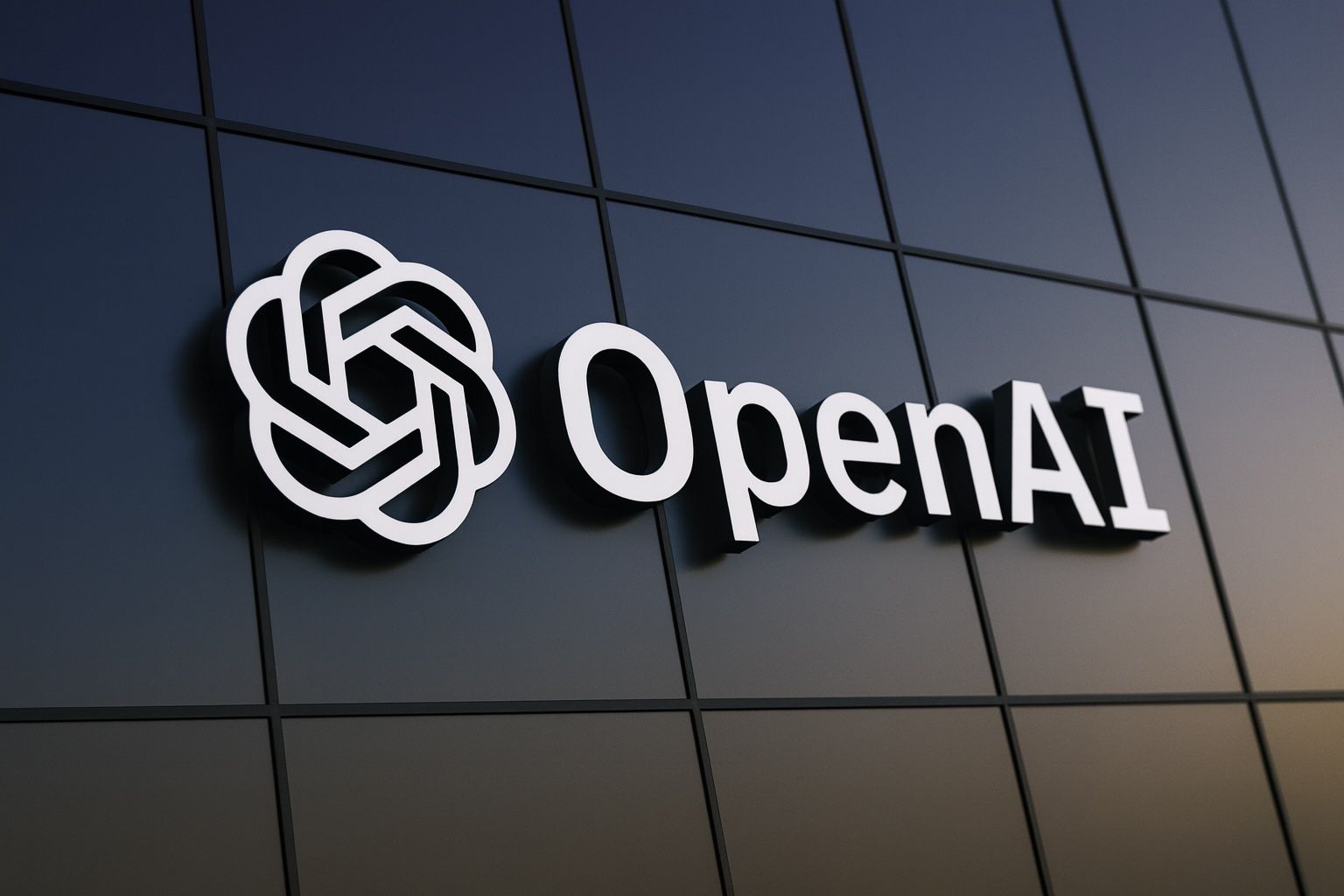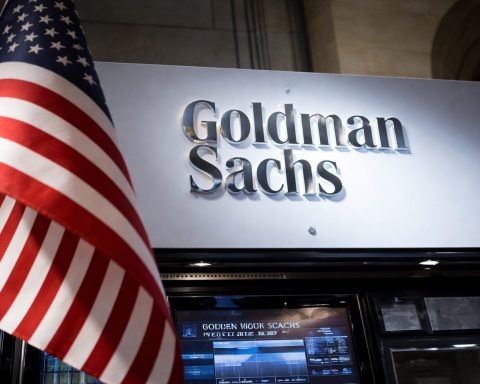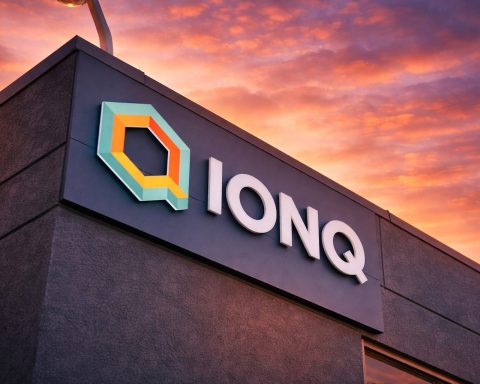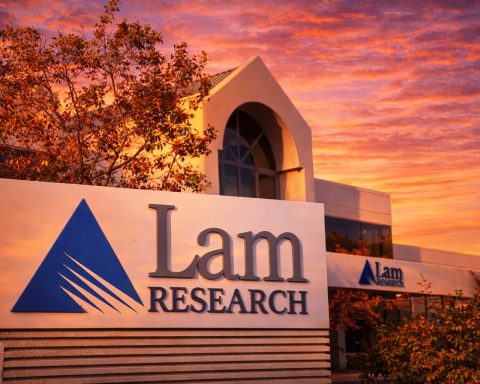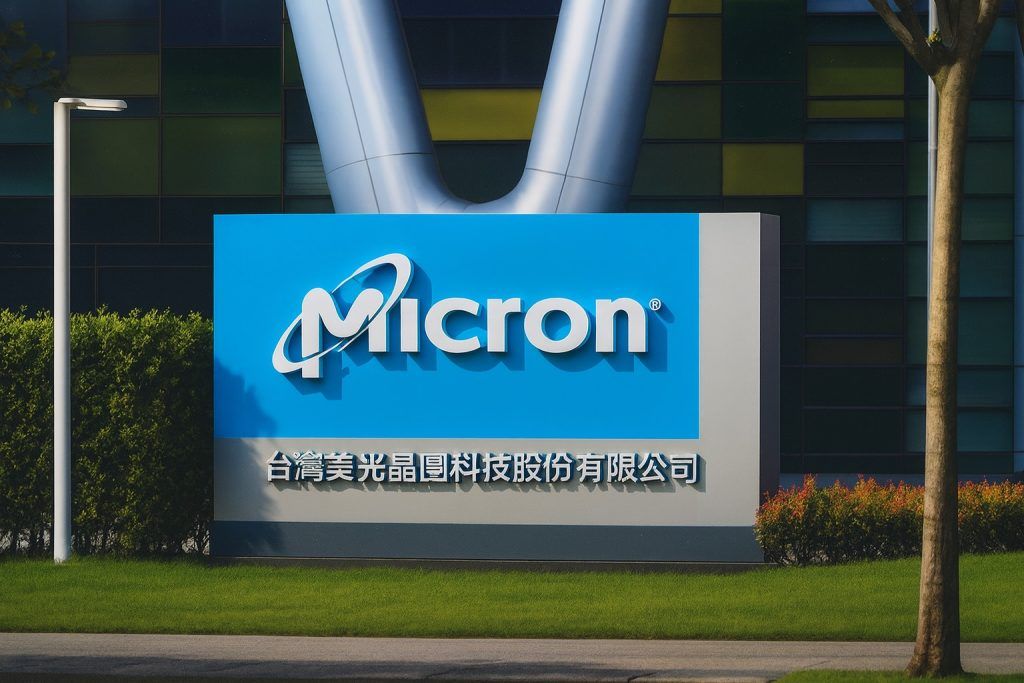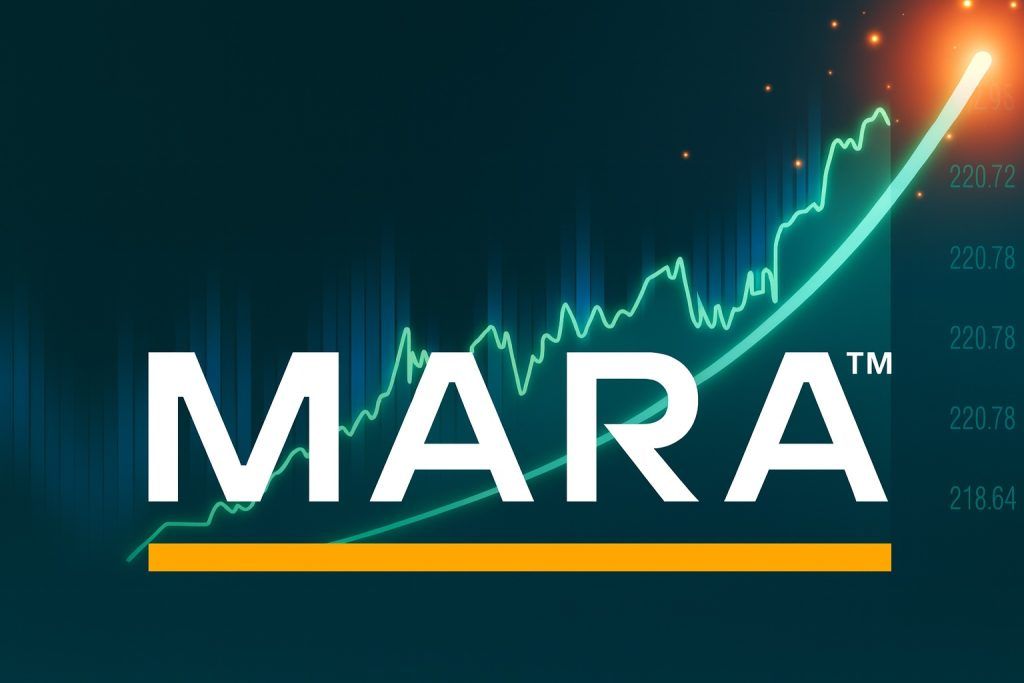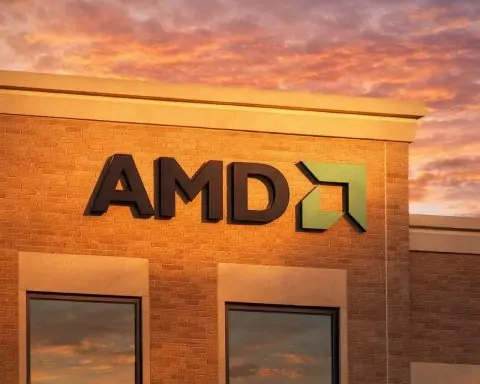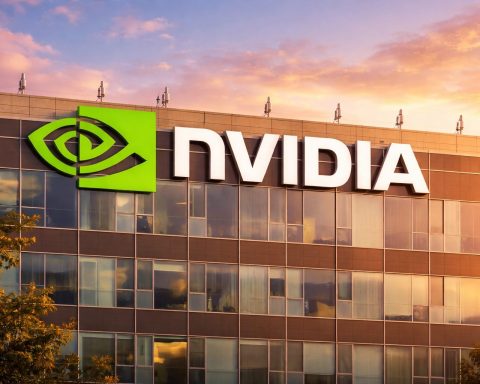- 6‑GW GPU Purchase & Staggered Deployment. On 6 Oct 2025, OpenAI and AMD announced a multi‑year partnership in which OpenAI will deploy six gigawatts of AMD graphics‑processing units (GPUs) across multiple generations, beginning with one gigawatt of AMD’s MI450 chips in the second half of 2026 [1]. The 6‑GW figure equates to hundreds of thousands of accelerators [2] and underscores the scale of OpenAI’s infrastructure ambitions.
- Exclusive Warrant & Potential 10 % Stake. AMD issued OpenAI a warrant allowing it to buy up to 160 million AMD shares for $0.01 per share. The warrant vests in tranches based on deployment milestones and AMD share‑price targets that climb to $600 per share for the final tranche [3] [4]. If fully exercised, OpenAI could own roughly 10 % of AMD [5].
- Revenue Impact & Industry Shockwaves. AMD executives expect the deal to generate tens of billions of dollars in annual revenue and more than $100 billion over four years as the wider ecosystem follows OpenAI’s lead [6]. AMD called the agreement “transformative” for industry dynamics [7], and investors sent AMD shares up over 23 % while Nvidia’s stock dipped [8] [9].
- Diversifying Beyond Nvidia. The partnership reduces OpenAI’s reliance on Nvidia, which dominates roughly 90 % of the AI‑accelerator market. Earlier in 2025, OpenAI reached a $100 billion deal with Nvidia to supply 10 GW of systems (including a gigawatt of the upcoming Vera Rubin chip) [10]; now it is tapping AMD as a “core strategic compute partner” [11]. OpenAI is also developing custom silicon with Broadcom [12] and works with Google and Amazon in the cloud [13].
- Capital‑Intensive Projects & Global Expansion. OpenAI is building Stargate giga‑data centres in the U.S. and abroad and intends to deploy sovereign AI infrastructure in multiple countries. Such projects require enormous capital; Reuters reports that OpenAI may need to raise tens of billions of dollars [14], and Sherwood News notes that the AMD deal follows rapid‑fire announcements with Broadcom and Oracle and will require heavy financing [15]. The partnership signals that OpenAI sees compute capacity as a strategic moat.
- Broader Market Impact. The deal catalysed a rally in AI‑adjacent stocks. Semiconductor firms like Super Micro Computer, TSMC, Samsung and SK Hynix jumped as investors bet on swelling AI demand [16]. At the same time, the partnership heightened scrutiny of supply‑chain bottlenecks, export controls and the environmental cost of the AI boom.
Background: Why OpenAI Needed More Silicon
OpenAI’s mission to build artificial general intelligence (AGI) has become a capital‑intensive arms race. Training and running models like GPT‑5 or the video‑generating Sora require vast amounts of electricity and parallel compute. In March 2025, OpenAI’s CEO Sam Altman unveiled a plan for Stargate, a U.S.‑based supercomputer project initially expected to cost $100 billion and deliver one gigawatt of computing capacity by late 2026. Since then, OpenAI has pursued multiple hardware partnerships, including deals with Nvidia, Broadcom, Oracle, and now AMD, to ensure that capacity is not constrained by a single supplier [17].
The AMD alliance marks a strategic pivot. Nvidia’s dominance over the AI accelerator market has created supply shortages and high prices, while export controls limit shipments to countries like China. AMD CEO Lisa Su has aggressively positioned the company as a credible alternative by releasing faster chips (the MI300X and upcoming MI450/MI470 lines), adopting open‑source software like ROCm, and courting cloud providers and model developers. For AMD, winning OpenAI’s business is validation that its architectures can compete with Nvidia’s for large‑scale deployments.
Deal Terms: 6 Gigawatts Across Multiple Generations
The October 6 joint announcements by AMD and OpenAI reveal several elements:
- Scale and timeline. OpenAI committed to deploy six gigawatts of AMD GPUs across multiple generations, starting with one gigawatt of Instinct MI450 GPUs in the second half of 2026 [18]. AMD said that OpenAI will build a one‑gigawatt data centre using MI450 chips and that revenue recognition will begin once that facility comes online [19]. The multi‑year roadmap suggests future deployments may use the MI470 or later MI500 series.
- Technical collaboration. The companies will engage in joint hardware and software engineering, sharing expertise across accelerator design, memory, networking, and the ROCm software stack. OpenAI will provide feedback on GPU features and performance, while AMD will tailor its roadmap to OpenAI’s needs [20]. This collaboration mirrors the “co‑design” approach Nvidia has long used with hyperscalers.
- Warrant for equity stake. AMD issued OpenAI a warrant for up to 160 million shares at an exercise price of $0.01 per share [21]. The warrant vests in tranches: the first tranche after delivery of the initial MI450 shipment (mid‑2026) and additional tranches when AMD’s stock hits price targets culminating at $600 per share [22] [23]. This arrangement allows OpenAI to become an AMD shareholder at minimal cost if the deployment succeeds and AMD’s stock rallies. The stake could equal roughly 10 % of AMD [24].
- Revenue expectations. AMD executives forecast tens of billions of dollars in annual revenue from the deal and said the ripple effect could exceed $100 billion over four years as other clients follow OpenAI’s lead [25]. AMD’s head of strategy Mat Hein predicted that the landmark agreement will attract additional customers because OpenAI “has a lot of influence over the broader ecosystem” [26].
Leadership Perspectives
Lisa Su framed the partnership as a win‑win. In the joint release, she said the companies will “push the boundaries of artificial intelligence” and that the collaboration will drive tens of billions in revenue for AMD while providing OpenAI with the compute needed to scale AI [27]. During a press call she emphasised that the deal is highly accretive to AMD’s earnings and positions AMD at the centre of the AI revolution [28].
Sam Altman, OpenAI’s CEO, called AMD a “core strategic compute partner” and praised the company’s leadership in high‑performance processors [29]. Altman added that scaling models demands massive compute capacity and that the collaboration will enable OpenAI to “pursue our mission of ensuring artificial general intelligence benefits all of humanity” [30]. OpenAI president Greg Brockman echoed this sentiment, saying the partnership will help build a global AI infrastructure and emphasising the importance of open standards [31].
AMD chief financial officer Jean Hu told reporters that the contract will be “highly accretive” and could generate tens of billions in revenue for AMD [32]. She added that the warrant structure aligns incentives and mitigates risk because share vesting depends on both deployment milestones and AMD’s stock performance [33]. AMD executive vice‑president Forrest Norrod described the deal as “transformative” for the chip industry [34].
Market Reaction: AI Stocks Surge, Nvidia Slips
Financial markets immediately reacted to the news. AMD’s stock surged more than 23 % in pre‑market trading, its biggest rally since early 2024 [35], while Nvidia shares dipped around 2 % [36]. Investors interpreted the deal as validation of AMD’s competitiveness and evidence that Nvidia’s grip on AI accelerators could loosen. Sherwood News noted that the announcement fuelled a rally across AI‑centric stocks: data‑centre supplier Super Micro Computer, semiconductor foundries like TSMC, and Bitcoin‑mining firms IREN and Cipher Mining all jumped [37]. Memory suppliers Samsung and SK Hynix, which will likely provide high‑bandwidth memory for AMD’s GPUs, also rallied [38].
The warrant’s share‑price targets created a speculative frenzy. Analysts speculated that if AMD’s stock approaches the $600 mark required for the final tranche, OpenAI’s stake could be worth tens of billions. The arrangement also underscores the growing practice of mixing equity incentives into AI infrastructure contracts—a tactic Nvidia pioneered with its part‑stock/part‑cash deals for sovereign AI projects.
Context: Competitive Landscape
Nvidia’s Dominance and Response
Nvidia still commands over 90 % of the AI accelerator market, thanks to its CUDA software ecosystem, efficient H100/H200 GPUs, and strong supply chain. Earlier in 2025, Nvidia announced a $100 billion investment to supply OpenAI with 10 gigawatts of systems. The plan includes OpenAI deploying a gigawatt of the next‑generation Vera Rubin chips in late 2026 [39]. Nvidia CEO Jensen Huang has been vocal about sovereign AI infrastructure and is building data‑centre partnerships with Saudi Arabia, the UAE and other nations.
The AMD alliance does not cancel OpenAI’s Nvidia contract. A source told Reuters that the AMD deal does not change OpenAI’s existing compute plans, including its partnerships with Microsoft and Nvidia [40]. Rather, it provides diversification, negotiating leverage and a hedge against potential supply constraints or export restrictions.
Other Chip Suppliers & Custom Silicon
Beyond Nvidia and AMD, several players are vying for AI infrastructure contracts:
- Broadcom: OpenAI is co‑designing a custom AI accelerator with Broadcom, according to Reuters [41]. Such bespoke chips could optimise power efficiency and reduce dependency on off‑the‑shelf GPUs.
- Google TPU & Amazon Trainium/Inferentia: Cloud providers have their own chips; Alphabet’s TPU and Amazon’s Trainium/Inferentia offer alternatives for both training and inference [42].
- Intel & Cohere: AMD has previously partnered with AI start‑up Cohere to supply MI300X accelerators. Rumours also suggest AMD may collaborate with Intel’s foundry services to secure more capacity, though nothing has been announced.
Memory & Supply Chain
High‑bandwidth memory (HBM) shortages remain a critical bottleneck. AMD’s MI450 GPUs will require large quantities of HBM from Samsung and SK Hynix. TS2.tech reported that memory manufacturers rallied after the deal because investors expect soaring HBM demand [43]. Supply constraints could limit how quickly AMD can deliver six gigawatts of compute, and U.S. export controls continue to restrict shipments to China and other markets [44].
Implications for OpenAI & the AI Ecosystem
Compute Capacity Becomes a Moat
By securing six gigawatts of AMD GPUs alongside Nvidia hardware and custom chips, OpenAI is building a multi‑supplier compute moat. This capacity will allow it to train larger models, serve billions of users via ChatGPT, and offer infrastructure to governments through initiatives like OpenAI for Countries. The company’s strategy resembles a critical infrastructure provider rather than a mere software start‑up.
Financial Engineering & Fundraising
The capital cost of building six gigawatts of data‑centre capacity is enormous. Analysts estimate that a single gigawatt data centre can cost billions of dollars in land, power, cooling and hardware. Sherwood News highlighted that OpenAI’s rapid‑fire deals with Broadcom, Oracle and AMD will require significant capital raising, possibly via equity offerings or a corporate restructure [45]. The company is also in discussions to restructure its governance and for‑profit entity to attract external capital [46].
Potential Risks & Challenges
- Supply‑chain bottlenecks. Even with AMD and Broadcom, global shortages of advanced packaging and high‑bandwidth memory could delay deployments. AMD must ramp up manufacturing at partners such as TSMC while complying with export controls.
- Technological uncertainty. Nvidia’s upcoming Blackwell and Rubin architectures may outperform AMD’s MI450/MI470. If AMD’s chips fall short in efficiency or software compatibility, OpenAI may not fully utilise its six‑gigawatt commitment.
- Regulatory and security issues. Building sovereign AI infrastructure across countries will require navigating U.S. export controls and local regulations. OpenAI’s OpenAI for Countries initiative already involves working with the U.S. government to ensure security and compliance [47].
- Environmental impact. A six‑gigawatt deployment represents a massive energy footprint—roughly the output of six large nuclear reactors. Critics argue that the AI boom could worsen climate change unless renewable energy and efficiency technologies advance in parallel.
Conclusion: A New Era of AI Competition
The AMD‑OpenAI pact is more than a supply contract; it is a strategic alignment that could reshape the AI hardware landscape. By securing six gigawatts of AMD GPUs and obtaining a warrant for a 10 % stake, OpenAI is hedging its bets against reliance on Nvidia while guaranteeing the compute needed for ever‑larger models. The deal sends a signal to the industry that AMD is a formidable competitor in the AI accelerator race and that compute capacity has become as critical as data or algorithms.
As the AI boom accelerates, expect further alliances, sovereign data‑centre projects and financial engineering that blur the lines between hardware, software and capital markets. The six‑gigawatt commitment, if realised, will put OpenAI among the world’s largest consumers of electricity and chips. Whether the bet pays off will depend on AMD’s execution, Nvidia’s response, and society’s willingness to fund the colossal infrastructure underlying the next generation of artificial intelligence.
In this report, I provide a comprehensive analysis of the multi-year partnership between OpenAI and AMD, which involves deploying six gigawatts of AMD GPUs beginning in 2026 [48]. It explains the details of the warrant granting OpenAI an option for a 10% stake in AMD, discusses expected revenue impacts that could exceed $100 billion [49], and includes insights from key executives like Lisa Su and Sam Altman. Beyond summarizing the deal, the report situates it within the broader AI hardware landscape, exploring competitive dynamics, supply-chain challenges, financial implications, and potential risks.
References
1. openai.com, 2. www.reuters.com, 3. www.reuters.com, 4. www.cnbc.com, 5. www.cnbc.com, 6. www.reuters.com, 7. www.reuters.com, 8. www.reuters.com, 9. www.cnbc.com, 10. www.reuters.com, 11. openai.com, 12. www.reuters.com, 13. www.reuters.com, 14. www.reuters.com, 15. sherwood.news, 16. sherwood.news, 17. www.reuters.com, 18. openai.com, 19. www.reuters.com, 20. openai.com, 21. www.reuters.com, 22. www.reuters.com, 23. www.cnbc.com, 24. www.cnbc.com, 25. www.reuters.com, 26. www.reuters.com, 27. openai.com, 28. openai.com, 29. openai.com, 30. openai.com, 31. openai.com, 32. openai.com, 33. openai.com, 34. www.reuters.com, 35. www.reuters.com, 36. www.reuters.com, 37. sherwood.news, 38. sherwood.news, 39. www.reuters.com, 40. www.reuters.com, 41. www.reuters.com, 42. www.reuters.com, 43. ts2.tech, 44. sherwood.news, 45. sherwood.news, 46. www.reuters.com, 47. sherwood.news, 48. openai.com, 49. www.reuters.com
